How to grow hops yourself on a balcony or garden bed
Content:
Description and useful properties of hops
Hops belong to the hemp family.
There are three types of hops in nature:
- Ordinary.
- Heart-like.
- Japanese.
Common hops are used in the production. In another way, it is also called khmil, khmelitsa or gorkach. It has sedative properties on par with passionflower, peony evading and a motherwort of the heart.
Everyone knows that hops are used in the brewing industry, but these are far from all areas of its use. It is widely used in medicine, pharmaceuticals, cosmetology, perfumery, bakeries and canning. The hop stalks are 15% fiber, which is suitable for making rope, burlap, yarn and paper.
Characteristic features of hops:
- The maximum length of a single hop stalk is 5-7 meters; it is a climbing plant covered with hooked thorns.
- Females give dense cones, which consist of 20-60 flowers, and male inflorescences are leafless panicles, light pollen from them is transferred to a distance of up to 3 km.
- The life cycle of a plant lasts up to 20 years, in rare cases more. The plant is widespread in the European part of the CIS, Eastern and Western Siberia, in the Caucasus.
- You can grow it at home in any part of the planet, hops feel good in dusty areas of the city, it is completely unpretentious.
The collected hop cones can be used for food purposes. They are rich in vitamins B1, B2, B6, PP, they contain valerian and hop killing acids, flavonoids, ash, hormones, essential oils, lupulin, the alkaloid humulin and a large amount of macro- and microelements.
The leaves and stems contain a large amount of vitamin C.
Hops are added to preparations to effect:
- Anti-inflammatory.
- Pain reliever.
- Anticonvulsant.
- Bactericidal.
- Antiulcer.
- Anti-allergic.
- Hyposensitizing.
- Capillary strengthening.
Hops are used for calming the nerves, improving the work of the digestive and cardiovascular system. Hop infusion is effective for insomnia, nervous excitement, oncology, diathesis, gastritis, ulcers, cholecystitis, nephritis, cystitis, atherosclerosis and hypertension.
It is forbidden to take hop-containing products to pregnant women, as the plant is poisonous.
Hop care
Hops love moist fertile soil. Under natural conditions, it grows in oak-ash forests, hiding behind bushes and in the ravines. The soil should be rich in humus.
Do not be afraid to grow hops in the city near busy highways, this will not affect the quality of the hops.
Basic conditions for growing hops on the balcony:
- Large pot (since hops have large roots).
- Installation of a support around which the shoots will curl.
- Regular watering every 3 weeks.
- Annual shoot pruning.
In the fall, yellowed cones are pruned and dried. Then they can be used to make medical and cosmetic recipes.
If you need a large number of plants for your own needs or for sale, the question arises: how to grow hops over a large area:
- For planting, you need to find a sunny place, good drainage must be provided on the site.A support for growth is installed near almost every plant. The ideal location is the south side of the house. In addition, hops are highly decorative.
- The soil should be loose, with a pH of 6.5-8. A layer of sand can be laid out to a depth of 30 cm. Each hole is made at a distance of more than 1 meter from one another. Compost or soil for seedlings is laid out at the bottom of the hole.
- The rhizome, that is, a creeping underground stem, deepens by 5-10 centimeters in a horizontal position, the roots look down. Now the earth can be tamped, and the hole can be covered with hay, and watered abundantly.
- The upper part of the plant dies off every winter, and the perennial part, the rhizome, develops underground. Hop roots are capable of withstanding severe winters.
- When the first shoots appear, they need to be cut off after two weeks. Only the strongest shoots remain, in the amount of 3 pieces. Tying is done when an individual hop vine has grown to 40 cm.
- Hops grow very quickly; in good spring weather, the shoot can lengthen by 15 cm.
During the period of active growth, it is desirable to introduce a large amount of nitrogen. This is not a mandatory procedure, compost will be enough for normal development, however, nitrogen will save the plant if the leaves suddenly turn yellow or shrink.
The plant is watered frequently, but the water should not stagnate. It is advisable that the water does not fall on the leaves.
To make the cones ripen faster, the plant is sprayed with a 40% solution of ammonium nitrate. If an alfalfa weevil or fleas appear, then the shoots are treated with chlorophos. 40% phosphamide will help get rid of the spider mite, 80% polycarbacin or 80% cineb, 80% curozan will cope with other diseases. Viruses can be killed with zinc sulfate.
Hop propagation
Common hops reproduce in several ways:
- By dividing the bush.
- By dividing the rhizome.
- Cuttings.
- Layers.
- Seeds.
Seed propagation is used less often, but this method is suitable if you need to sow a large area.
To propagate hops vegetatively, you need to wait for spring, while the shoots have not yet begun to grow, dig up the rhizome and cut it into several parts. As a result, you will get several cuttings. Each should clearly show full-fledged kidneys.
In the first year, the cuttings are already ready for independent development, so it is up to the gardener to grow them in the garden or plant them in a permanent place.
Seed propagation is also simple:
- It is better to grow seedlings at home by sowing seeds in bowls.
- When seedlings appear, they require the same care as for any indoor plants.
- Then the sprouts are transferred to the ground and grown.
- Only in the second year will the seedlings begin to grow rapidly, in the first year they will reach small sizes.
- When propagating by seeds, there is a risk of getting a large number of males.
- Because of this, the seedlings are planted close to each other, and when the fruiting period begins, the males are isolated.
In order for the plant to develop well, 3 kg of rotted manure is laid in the planting pit.
Amateur gardeners grow several individuals, but if there is a need to plant an entire plantation, then it is important to observe the distance between rows and bushes. It will be 1 meter between hops, and 3 meters between rows.
The first cones can be harvested already in the first year if the hops were obtained by vegetative propagation, but the yield will be small. Full-fledged buds will grow in the second year. But plants that have grown from seeds will give the first fruits only after 4 years.
Cones can be harvested from mid-August to mid-September.
Cones at this point should be at the initial stage of ripening, so do not delay. It is even better to calculate the period when there will be a few days left before the buds ripen. This can be determined by the color, it will be greenish yellow. If the color is bright green, then the buds are not yet ripe, if there is a brown tint, then they are overripe.There is no point in collecting cones with protruding scales, since there are few seeds and lupulin in them.
The cone is torn off along with the pedicels, if the cone is without a leg, then it will crumble during the drying process.
It is not difficult to grow hops, it does not require special conditions and knowledge. Useful properties hops can be used in various fields: medicine, cooking, cosmetology.
More information can be found in the video.



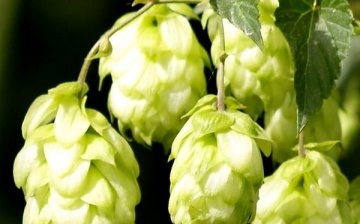

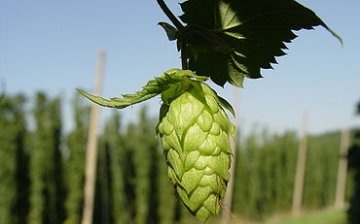





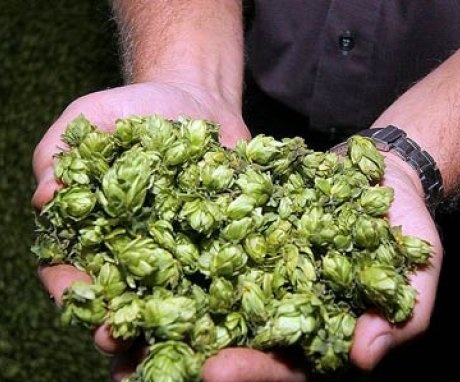
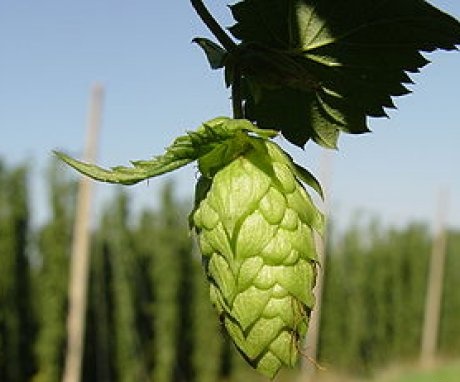
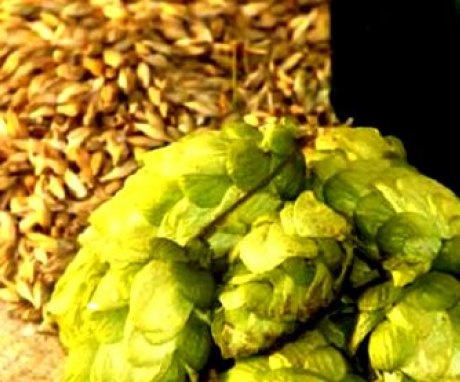
I live in a village, our hop grows, if not everywhere, then it is easy to find it. I have long wanted to ask any hops suitable for brewing or any special?
And if we start growing hops now, where can we sell it ??? The nearest brewery uses powders in the production of beer ...
Our hop has been growing for a long time, and now we have one problem - to prevent it from spreading, since it spreads very far from the mother plant. True, last year they dug a trench deep on the bayonet of a shovel and placed pieces of slate vertically, now they should not creep.